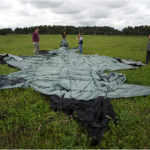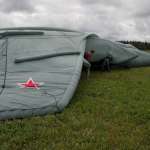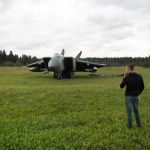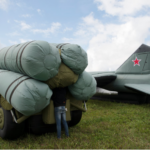The Andrew Kramer, New York Times article A New Weapon in Russia’s Arsenal, and It’s Inflatable details a factory which is building inflatable Russian military decoys. One effort includes the Kremlin contracting a hot-air balloon company to manufacture inflatable military decoys. We thought remote sensing professionals should take note of these tactics first used in WWII. Commercial sources of spectral imagery and synthetic aperture radar (SAR) can be very useful when dealing with inflatables.
In general, many SAR systems can not be tricked by inflatables, radio waves reflect back differently depending on different surface areas i.e., an inflatable vehicle decoy will not return the same amount of energy as the real thing.
If the inflatable company is innovative enough to deploy well-placed reflectors you could trick an existing space based SAR satellites with spatial resolutions as large as the true object. Another benefit is you can at least keep the detection and tracking SAR/Imagers busy and causing them to get overloaded with wrong information and target far too often. There is one large caveat, airborne and new very high-resolution space borne SAR system’s like TSX-NG, XpressSAR and Umbra Lab have the sub-meter spatial resolution and sensitivity to detect even well-paced reflector trickery.
Rusbal employees inflating a mock S-300 missile system next to an inflated mock MIG-31. Credit James Hill for The New York Times.





